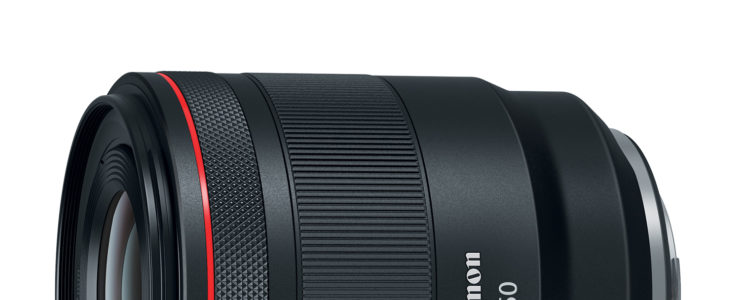B&H Photo accepts pre-orders.
Press release:
Cinematic Imaging Reimagined: Introducing Sumire Prime Lenses From Canon
The Company’s First Set of PL-Mount Cinema Prime Lenses Merge the Art and Science of Cinematography
MELVILLE, NY, April 3, 2019 – Covering the core range of focal lengths that cinema professionals desire, Canon U.S.A. Inc., a leader in digital imaging solutions, is excited to announce the company’s first set of seven cinema prime PL-Mount lenses, aptly named Sumire Prime. Pronounced “Soo-mee-ray,” the word is of Japanese origin and is associated with a floral gentleness and beauty. Sumire Prime Lenses offer a unique artistically pleasing look with gentle and beautiful skin tones and smooth bokeh, designed for use with large-sensor cinema cameras, including 35mm full-frame cameras such as the EOS C700FF Cinema Camera.
In addition to bright T-stops and Canon’s renowned warm-color imagery, a unique optical design introduces a nuanced look as the lens aperture approaches its maximum setting – subtly modifying the textural renderings of the human face closeup. It also smooths the transition to the fall-off portions of the scene resulting in a pleasing bokeh. This combination adds emotional expressiveness and provides creative flexibility to create a memorable scene.
“Sumire in Japan is the name of a flower, and like the petals of a flower, our lenses are most beautiful when fully opened. This is the inspiration behind the Sumire look,” said Kazuto Ogawa, president and COO, Canon U.S.A., Inc. “The feedback from cinematographers is crucial and their voices have been heard loud and clear – they asked Canon to introduce a set of PL-mount cinema prime lenses. We went a step further and our new Sumire Prime Lenses produce the beautifully cinematic and unique images professionals desire. We can’t wait to see how the lenses will contribute to the art of filmmaking.”
The new set of seven Canon Sumire Prime Cinema Lenses include the following:
- CN-E14mm T3.1 FP X
- CN-E20mm T1.5 FP X
- CN-E24mm T1.5 FP X
- CN-E35mm T1.5 FP X
- CN-E50mm T1.3 FP X
- CN-E85mm T1.3 FP X
- CN-E135mm T2.2 FP X
All Sumire Prime lenses feature an 11-bladed iris and bright T-stops that allow users to capture images that feature a more natural circular-like bokeh from both maximum to minimum aperture. The use of an odd number of iris blades also helps to diffuse light rays and produce what is generally considered a more sought after, artistically pleasing and cinematic look with warmer colors. The lenses also achieve uniform color balance throughout the lineup, helping to reduce the need for post grading, even when a production is frequently changing lenses.
The highly durable Sumire Prime lenses feature the same outstanding operability and reduced focus breathing as Canon’s well-established EF-Mount Cinema Prime Lenses. Manual operation provides users with the resistance they desire to make precise changes in focus. A 300-degree focus rotation angle and gear position is consistent across the entire Sumire Prime series of lenses – eliminating the need to adjust gear positions when changing lenses.
“The new Sumire Prime lenses are the perfect blend of science and art,” says cinematographer Matt Porwoll, who shot the first U.S. footage with the lenses. “The bokeh comes alive in ways that weren’t occurring with other lenses I’ve used. Lens flares have a dynamic feel to them, rather than behaving in a formulaic manner. I wish I had these on my last project!”
The Sumire Prime Lenses are compatible with the complete lineup of Canon Cinema EOS full-frame and Super 35mm 4K cameras, including the EOS C700 FF, EOS C300 Mark II and EOS C200. In addition to Canon cameras, the new lenses are also compatible with the latest full-frame and Super 35mm PL-mount cameras from leading manufacturers. Additionally, the mount on the Sumire Prime Lenses is interchangeable and can be converted from PL-Mount to EF-Mount at a Canon Factory Service & Repair center. A Canon representative will be able to perform the service or even revert back to original PL-mount upon request at an additional cost*.
Availability*
The Canon CN-E24mm T1.5 FP X, CN-E35mm T1.5 FP X, CN-E50mm T1.3 FP X and CN-E85mm T1.3 FP X lenses are scheduled to be available in Summer 2019. The Canon CN-E14mm T3.1 FP X lens is scheduled to be available in Fall 2019. The Canon CN-E20mm T1.5 FP X and CN-E135mm T2.2 FP X lenses are scheduled to be available in Winter 2019/Spring 2020.
For more information, please visit: usa.canon.com/cinemalenses.






